5. Come and See (1985)
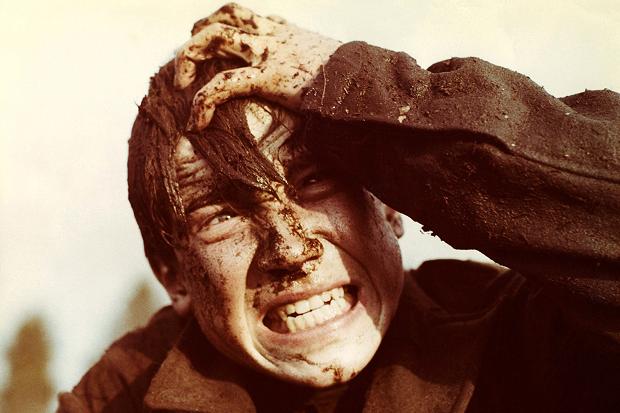
On a list like this, a war movie is mandatory. Choosing among so many great war movies is a truly difficult task. However, this Soviet Union masterpiece has something that no other movie of its kind has: an unparalleled sense of realism.
It is the story of Florya, a young and naive boy from Belarus who finds a rifle buried in the sand, inspiring him to join the Soviet resistance fighting German troops during the occupation of his country in 1943. Yet he is not prepared for the horrors he is about to witness.
Sure, there are other outstanding and realistic war movies out there, but most of them depend on over-the-top violence and glorified patriotism (depending on the country of production) to achieve distress and emotional attachment.
“Come and See” does exactly the opposite. It relinquishes gratuitous violence, rivers of blood and guts, soldiers calling for their mothers with their last dying breath, emotional speeches, and most importantly, the portrayal of heroic figures among other war movie tropes. Yet it is such an agonizing experience to watch by their facial expressions alone.
For example, it could have easily gone over the top with the village massacre scene, showing burning corpses and torn flesh, gang rapes and overall genocide. Most of the atrocities, however, happen off screen. We only see the aftermath mirrored in Florya’s face. Aleksey Kravchenko’s performance is haunting as the raw emotions depicted on his face are often too much to handle. This is the face of war, this is the face of despair.
Although he joined the resistance out of patriotic reasons to proudly serve his country, he quickly begins to realize how powerless he is, blaming himself for his family’s demise.
The violent imagery is sparse but when it hits, it hits really hard. The pile of corpses stacked in Florya’s village, the burned man talking, the girl bleeding after being raped; all of this, combined with the ambient sounds and low-pitched noises of the soundtrack, is truly crushing. The direction by Elem Klimov along with the realistic and sometimes dreamy cinematography of Alexei Rodionov are absolutely brilliant.
The characters are flawed, ordinary people fighting for their own ideals. There is a reference to the infamous Ukrainian Battalion 118 used as a great reminder of treason and betrayal as a means of surviving.
Along with “Grave of the Fireflies” (1988), it is the most devastating war movie ever made. It should be shown in schools worldwide as education and as a constant reminder of the atrocities humans are capable of.
The final scene with Hitler’s picture is absolutely monumental and awe-inspiring. Spoiling it here would be a crime. But in Roger Ebert’s words, “I must not describe the famous sequence at the end. It must unfold as a surprise for you. It pretends to roll back history. You will see how. It is unutterably depressing, because history can never undo itself, and is with us forever.”
Truly, history turn back nor fix itself.
4. Titicut Follies (1967)
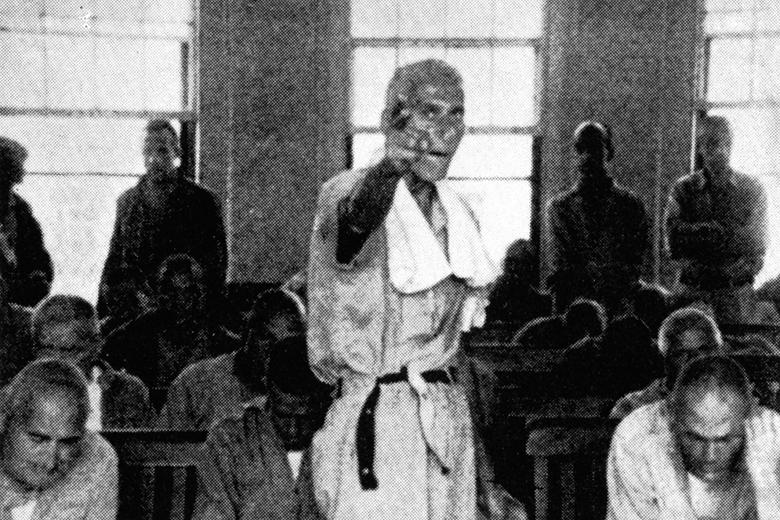
Frederick Wiseman is a great filmmaker, serving the documentary genre for years unending. Since he made his debut with “Titicut Follies” in 1967, he has directed 46 documentaries tackling various subjects. Still, none of these are so influential and iconic as “Titicut Follies,” which was banned for many years with the accusation of invading inmates’ privacy and insulting their dignity. The reasons for the ban, however, might not be so obvious.
This is a very hard to sit through documentary about the Bridgewater State Hospital in Massachusetts and its criminally insane inmates. It focuses on several patients and their backstories as well as the general treatment of them by the staff.
As the film progresses, you come to realize that not all of the inmates are insane and that the conditions they live are almost inhumane. Everyone lives isolated in rundown cells, constantly underfed and dirty, often bullied or mocked by the staff and forced to walk around completely naked. The force-feeding scene is extremely sad and unpleasant to watch.
A patient has a tube inserted through his nostrils and force fed soup by a doctor, while images of his corpse being prepared for the funeral intervene. It gives you the impression that the staff treat the occupants like lesser beings, as if they were simply a sight of amusement. They clearly take advantage of their position and the inability of the patients to react or to amuse themselves.
Some of the patients are convicted criminals (though we don’t learn their backstory), and others are clearly unstable, but there are some cases like the Russian inmate who seems perfectly normal. He in particular is probably convicted for political reasons because he embraces communism while being judgmental of America’s actions concerning Vietnam.
A classic case of Cold War victimization. He asks crystal clear why is he imprisoned but never gets an answer. There are several examples of occupants mistreatment throughout the movie.
Wiseman, with his distinct filmmaking style of detachment and simple observation, without narration, music or dramatization of events created a truly unique documentary. The way the documentary unfolds without subjectivity gives the viewer the chance to come to his own conclusions and interpret the facts however they see fit.
Still, “Titicut Follies” is a morbid and sad piece of work about an unknown matter that’s inconspicuous to the public, raising questions about one’s role in society and how convicted people should be treated. During its ban, it was allowed to be shown to doctors, social workers and other professionals for scientific purposes alone.
It had a decisive role in cinema, as it was shown to the cast and crew by Milos Forman before shooting “One Flew Over the Cuckoo’s Nest” (1975), and by Martin Scorsese before filming “Shutter Island” (2010). This is the real deal!
3. The Elephant Man (1980)
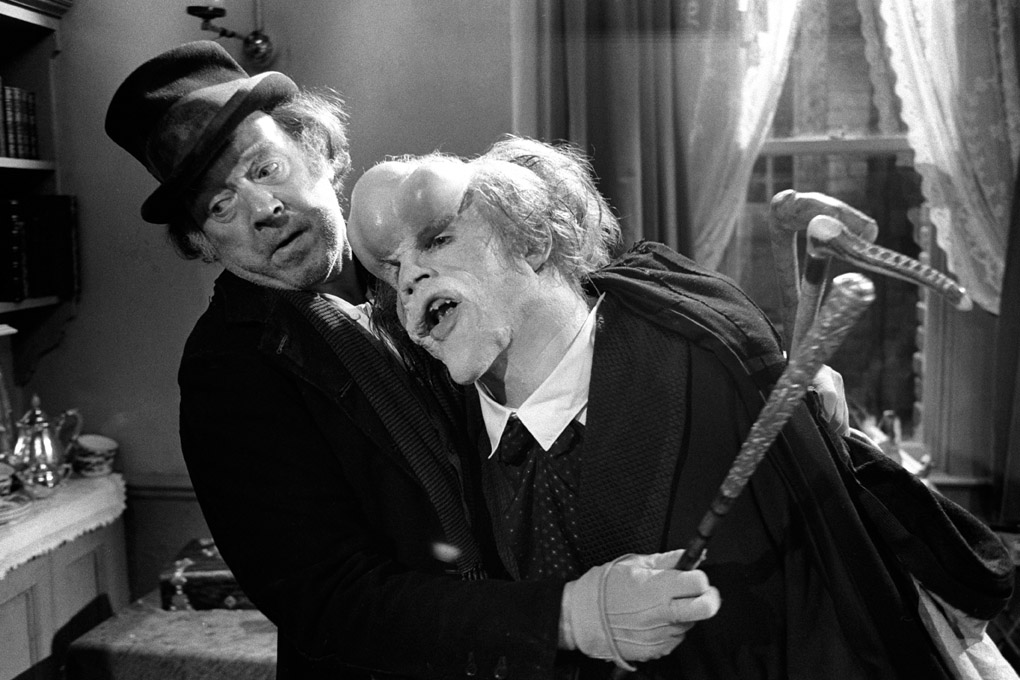
David Lynch is associated with the surreal and the obscure and his name has become synonymous with this cinematic approach. However with “The Straight Story” (1999) and his earlier film “The Elephant Man,” he has proved he can direct and handle a realistic and down-to-earth scenario equally expertly.
“The Elephant Man,” which is his first studio film, follows the titular character, John Merrick (real name Joseph Merrick), through his turbulent life in Victorian England. He is a hideously deformed man, treated as a freak by the masses. All of this is about to change when a doctor named Frederick Treves comes to him and takes him under his care in a hospital. Yet the torment in his life has no end.
Technically, the movie is outstanding. The direction, cinematography and acting are all superb. What stands out the most is practical effects and makeup for the movie. Not all movies can brag about creating an Academy Award category. In terms of scenario, the movie is mostly based on real doctor Treves’ book about Joseph Merrick.
What makes this movie eligible for this list is not necessarily its content or the fact that it is based on a real person’s life, though it is pretty tragic. The real Merrick’s life was not as difficult as his character’s life in this film. The story of the film is truly heartbreaking as we learn that John Merrick is a kind, sensitive man trapped in a monstrous body, that all he wanted was to be accepted (mostly by his mother).
Characters like the night watchman and Bytes fortunately never existed (the real showman named Tom Norman is said to have treated Merrick with respect). He was not often mistreated by the public and lived a relatively normal life in the hospital until his death. Of course, all of these are stated without diminishing how hard and unfortunate his short life might have been.
The real tragedy and dehumanizing part of the movie is what the Elephant Man represents. How many “Merricks” are out there that weren’t that lucky? Not every outcast of society is fortunate enough to find his “Treves.”
Even today, society has little tolerance for anything out of the ordinary, whether it be physical or emotional. The movie was criticized for being sentimental, inserting fictional events to overdramatize the character’s life. Yet it underlines the idea of physical abnormality and deformity contradicted with kindness and gentleness.
It is the definition of the phrase “don’t judge a book by its cover.” Unfortunately, society is built in a way that first impressions and external appearances are of utmost importance, even if they are fake. In conditions like these, these ‘Elephant Men’ have no chance.
At its core, though initially seeming optimistic, the movie provides an insightful thought on human malevolence, resentfulness and judgmental nature.
2. Martyrs (2008)
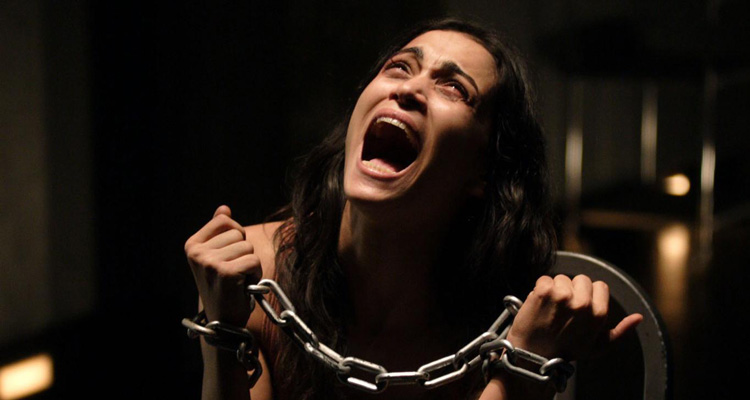
This French-Canadian film by Pascal Laugier has become one of the most essential movies representing the New French Extremity movement. This wave of cinema has become notorious for its obscene amounts of violence, grotesque plots, and downright deranged and degenerate characters. Even with these standards, “Martyrs” stands out as it is not your typical horror (or torture porn) movie.
We originally follow Lucie, with her childhood friend Anna, as she embarks on a journey of revenge against the people who tortured her as a child. As her own demons inevitably lead to her demise, we continue to watch as Anna winds up falling victim to the same torturers, a secret society with the sole purpose of discovering the secrets that lie after death.
Anyone afraid of death out there? Welcome to the club. However, this club takes fear of death to the next level, using young females as subjects to their brutal experiments in creating the perfect martyr. Anna turns out to be this perfect specimen, as through her martyrdom she manages to achieve the sought after transcendence; being both dead and alive, her eyes see through to the next world, but her lips whisper its secrets in this one.
It’s not the first movie that deals with the quest to learn about the afterlife, nor will it be the last, and it certainly isn’t the only one to depict explicit torture and pain. The combination accomplished here though is nothing sort of absolute horror.
The torture scenes are so explicit and realistic that they are hard to stomach. The captive girls are thinned out to a skeleton-like state, flayed alive, beaten and degraded, so much so that it makes the viewers wonder at the extremes the human nature can reach. However, it is not the ferocity of the tortures depicted that add the film to this list, but the rationale that prompted them. It is not often that torture movies justify the heinousness depicted.
It raises the ever-relevant argument concerning the phrase, “The ends justifies the means.” Should one utilize any means or method to reach their goal, even if it causes harm to others? Of course, the movie takes this premise to towering extremes concerning both “the ends” and “the means,” but its speculation can be applied to everyday situations as well.
It requires great talent to depict everyday dilemmas about morality and the natural fear of death in such a manner. A true must for any fan of horror cinema and whoever has the stomach and nerves to endure it.
1. The Girl Next Door (2007)
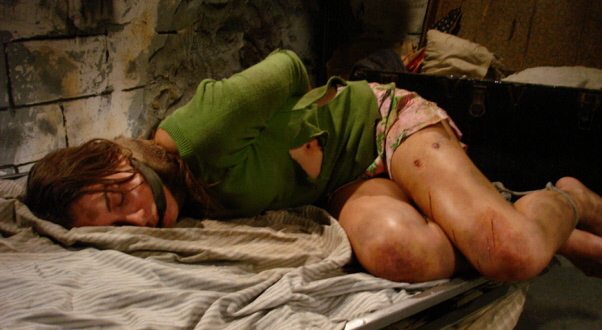
This is not another domestic violence movie involving children. This movie is PURE EVIL! Of course there are other movies, like “An American Crime” (2007) that deal with the same subject, as the actual crime was one of the most shocking in modern American history. However, none is as impactful as “The Girl Next Door.”
It’s a relatively low budget film adapting Jack Ketchum’s book of the same name that deals with the harrowing real life events that occurred in Indianapolis, Indiana in 1965.
We follow two sisters who are sent to live with their aunt and cousins after the death of their parents. Megan, the older one, happens to meet a boy named David living next door, who is also a friend of her cousins.
At first everything seems fine, just ordinary families in an ordinary rural town in 1960’s America. Megan, however, is scolded by her aunt for no apparent reason and picked on by her cousins. What starts off as a mere tease and unfriendly attitude escalates into something unspeakably horrible.
The aunt manipulates her sons into torturing Megan, making them believe she is the root of all evil. Even the disapproving David is unable to stop them, laying in apathy along with the viewers who would do anything in their grasp to stop the eminent terror. When help finally comes, it is too late.
The amounts of brutality and savagery the girl has to endure are overwhelming, and the torture scenes are sometimes too much for the audience to handle, making the sheer hopelessness of the movie just unbearable. Blythe Auffarth’s demanding performance is phenomenal, making the audience care for her, wishing for a happy ending and closure.
Considering the fact that this is a true story, the anguish and torment depicted on screen aim for more than pure shock value, making the movie a commentary on human cruelty and malice often surfacing in seemingly quiet, urban microsocieties.
The character of the aunt is one of the most evil, vile and despicable villains in cinema history, portrayed brilliantly by Blanche Baker. She is masterfully manipulative; driven by her bitterness and anger toward her cheating husband, she turns her sons against Megan purely out of spite. She lets them sexually harass her, rape and beat her while she is preaching about women and their impurity. She considers Megan the manifestation of immorality, seeing in her the woman her husband left her for.
It is one of the most misogynistic movies ever created, underlining the darkest pits of human nature and how people tend to generalize dangerous ideas and fanaticism, perpetuating malice to younger generations through parental manipulation.
It also serves as a constant reminder that the cruelest and most unfair fate often befalls the most innocent people who may live next door.
Author Bio: Diamantakos Yannis’ main studies consist of economics and law. Although he didn’t have the opportunity to study filmmaking like he always wanted, his passion for cinema, developed in a young age, never waned. On the contrary, it never stopped growing. He has been making lists and reviewing movies for years in his own website and is more than eager to disseminate his unceasing infatuation with cinema and its unparalleled magic.